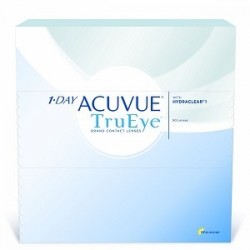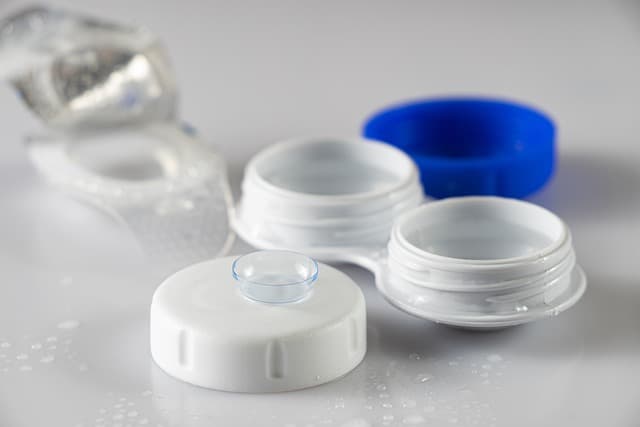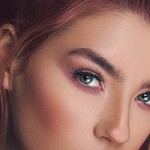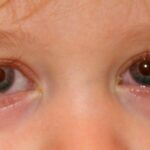What Age Can Child Wear Contact Lenses

There was a time when wearing glasses was the reigning trend. Everyone wanted to wear glasses, including children. So at a very young age, they would take mummy’s recommended glasses, put them on and sometimes, take it to school. But now, it is about contact lenses.
So when is the right time for your children to start wearing contacts? When is the right time to allow them to wear contact lenses and take on the other responsibilities that come with them?
When Can Children Start Wearing Contact Lenses?
According to the U.S. Food and Drug Administration (FDA), children can wear contact lenses from 8 to 12 years old. But that’s not all; there is more to it. The FDA only approved using contact lenses for nearsighted children (kids with the progression of myopia). Also, only disposable contact lenses were administered, meaning that children must remove them before sleeping and not wear them overnight. This is according to the looking test in Optometry and Vision Science.
But contact lenses are not just for myopic children. Children with various vision problems and eye infections might require the need for vision correction with contact lenses.
The Process of Getting Contacts for your Child
Before you can decide whether or not your child is right for the daily disposable lenses, you have to ensure that eye care professionals begin their tests on your child’s eyes first. The result would then tell you if he or she needs to wear lenses or not.
Your child must go to the eye doctor for a proper exam and fitting. Your child would first have to meet with the doctor (called the consultation session). The doctor might ask a few questions about the child’s medical history, lifestyle, etc. Many parents are also usually asked to help with a more definitive answer.
After this session, there will be a standard eye exam and a contact lens exam to determine your child’s specific eye prescription. Then the fitting will follow to find the perfect contact lenses for your child based on peculiar eye shape, size, and style.
Note that your child must not use someone else’s lenses because each contact lens is unique to the owner’s eyes. Unlike glasses (which should also not be shared), contact lenses stick to the eye pupil, and they carry greater potential for eye infections and possible vision loss if the proper care is not taken.
Check some of our products

Dailies Total 1 (30)
Dailies Total 1 With all the innovations of today’s modern world, don’t settle for anything less. Why risk discomfort ...

Purevision 2HD contact lenses
PureVision 2HD from Bausch + Lomb offers a distinct blend of convenience, comfort, and superior vision quality. These spheric...

1-DAY ACUVUE TRUEYE (90)
The 1-day Acuvue TruEye is a disposable contact lenses designed for people who want to keep their eyes healthy without the ...

Biofinity Energys 3 contact lenses
Today’s digital life demands contact lens designed specifically to cater the digital needs. And, this is exactly what Biofi...
Contact Lens Safety Tips and Risks
The following are the things you need to take note of if your younger children are ready to start wearing contacts.

Benefits of Contact Lenses for Children
While contact lenses are suitable for children in case of medical need and can enhance their self-confidence, contact lenses also offer additional advantages such as;
- Myopia management and control: As mentioned earlier, contact lenses help children correct myopia or nearsightedness in children from the ages of 8 to 12.
- Better peripheral vision: Another reason to encourage contact lens wear in children is that contact lenses provide better vision quality. While glasses have frames that could block their views from the side of the eye, lenses do not.
- It is convenient: One of the disadvantages of glasses is the tendency to break when young children are playing in school. Lenses cannot break or get lost during the day’s activity, plus it feels very natural.
- It is better looking: If your child is already concerned about appearance, then there is no doubt that he or she would love the lenses even if they are daily disposable contact lenses. Though they were traditionally loved, Glasses became a stigma for nerdiness and embarrassment over time. While your child can still get his or her eyes corrected, it is great to also look good in it.
Some Cons
Things that might not be much great news to hear include;
- Sanitation: Many children might not like the idea of the other responsibilities that come with lenses. Not being able to touch the eyes, having to properly care for the lenses, and even personal hygiene becomes a must.
- Lens care: If the lens is cared for, then eye health is achievable. The opposite applies if the lenses are not taken care of. Seeing that wearing contacts is more than the great things, lens care and the need to change the daily disposable contact lens every day might not be a breeze.
- Dry eye: There is also the likelihood of sensitive eyes, itchiness, and irritation, which comes with wearing lenses. But if you keep your lenses clean, these symptoms will be minimal.
Caring for Your Child’s Contacts | Important lens care
To safely wear contact lenses require important lens care tips. It is important to teach your children that wearing contact lenses is about appearance, safety tips, and care. You must teach a few things when your children start wearing contacts.
- Always keep your hands clean before touching your eyes or the lenses. Remove contacts with ease and put them back in their cases after.
- Don’t wear contact lenses for more than a day, and certainly don’t wear them overnight.
- If you feel that the contact lens itches or burns, remove it immediately and report to your eye doctor for a check-up.
- Again, never wear contacts that belong to someone else.
- Don’t put your contact lens in saliva or water.
- If you engage in sports, wear safety goggles over your lenses.
Read also:






